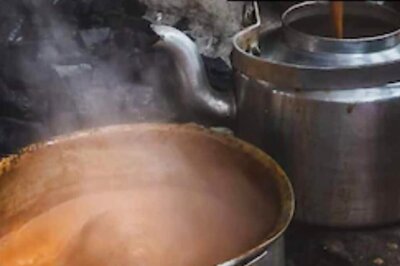
views
Mumbai: The New Year has begun with a positive buzz in the steel industry with demand for the metal picking up in a few product segments and its price also holding on after a sharp drop last year. Though, the upward trend could mean a recovery in other core sectors where steel is used as a raw material, industry officials and analysts reckon it is too early to declare a complete recovery for the metal.
Steel is the basic raw material used in various sectors from infrastructure to auto and white goods. Demand and price movement of steel is taken as a barometer to gauge the condition of the overall economy.
Partner at consulting firm Ernst & Young Navin Vohra believes domestic construction will help steel stage a comeback. “Though they are not yet ready to start new projects, the builders we talked to now want to complete the half-finished ones to generate cash flow. This, along with the Government of India’s stimulus package is expected to generate demand for steel,” said Vohra.
The government has sought to revive the economy by pledging to spend Rs 20,000 crore on infrastructure and these measures largely benefit the construction industry, which is the largest consumer of steel in India. Steel prices have also stabilised internationally, after a spiraling drop last year, and are currently at $550-$580 a tonne.
Officials of Tata Steel, JSW Steel and Essar Steel – the three largest private steel makers in the country – confirmed demand for long products in the construction sector has picked up in the last two weeks. “We have seen an increase in purchase enquiries from industrial construction sector and inventory level across steel mills in India have also come down,” Finance Director at JSW Steel Seshagiri Rao said.
JSW’s inventory level had grown to almost 50 days of stock after demand for steel tanked and prices slid by 50 per cent within three months since July last year. “Now the inventory level is down to a month’s stock. We usually keep 14 days of inventory,” Rao said. The Sajjan Jindal-owned company now plans to completely revive its production this month after announcing a 20 per cent cut in November 2008.
Production at Tata Steel’s Jamshedpur plant is back to “normal level” after its planned 17-day shutdown from November 27, got over. “We have seen some action coming back in our distribution network. There is surely a little bit of revival, but nothing compared to the demand seen at the beginning of last year,” a senior executive at the company said.
An official at Essar Steel points out that there was no buying happening in the past one to two months as everyone was in a shock from the spiraling fall in prices. “Consumers, who used to pile up stocks expecting prices to increase, had stopped buying. Now their stocks are getting over and are coming back to the steel mills for fresh purchase,” he adds.
A particularly good omen for the steel industry is the renewed demand for scrap in China, the world’s largest consumer of steel, which has led to talks of a possible pick up in production. US-based consulting agency, Steel Market Update, earlier this week said “we are starting to see stability in domestic pricing,” which means that the world’s largest economy is also upbeat on the ferrous metal's future.
Back home, though the upward trend could mean a recovery in other core sectors where steel is used as a raw material, industry officials and analysts reckon it is too early to declare a complete recovery. The auto industry, the second biggest steel consumer, is lagging in its demand and steel companies do not see an immediate recovery in demand from the sector.
Steel traders in Mumbai reckon that demand has still not picked up enough to be termed a recovery. Secretary of the Mumbai-based Darukhana Iron Steel & Scrap Merchants Association, US Bhatt, admits that “there is a little bit of movement of goods, but there is no overall improvement in the situation. In fact, the Bombay Municipal Corporation’s revenue from octroi, or road tax fell to Rs 22 crore in December from about Rs 35 crore in the same period last year.”
Rao from JSW Steel believes it is still too early to make predictions. Essar Steel’s official adds, “In the next one month, we will be able to gauge what the actual demand is going to be.”
(Prince Mathews Thomas is a special correspondent with the new business magazine to be launched by Network18 in alliance with Forbes)



















Comments
0 comment